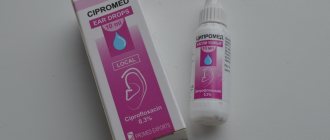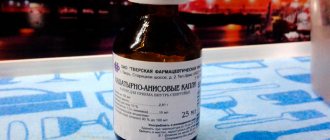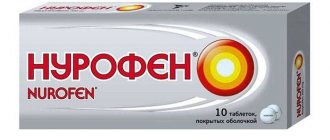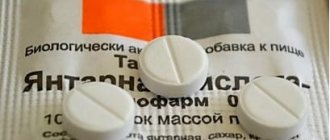Compound
One tablet of Pyrazinamide contains 500 mg of the active substance pyrazine carboxylic acid amide. Auxiliary and additional components:
- Low molecular weight insoluble detoxifier polyvinylpyrrolidone
- Pyrogenic silica dioxide in colloidal form as an enterosorbent
- Disintegrant for the creation of solid dosage forms – sodium starch glycolate
- A compound of magnesium salt and stearic acid as an emulsifier
- Purified talc and granulated cellulose tablets are binders.
Overdose
If the recommended dose is exceeded, the side effects of Pyrazinamide sharply increase. The function of the liver and central nervous system is impaired. Nausea, vomiting, manifestations of polyneuritis, and hallucinations are observed. It is necessary to rinse the stomach, give the patient an enterosorbent and call a doctor. Subsequently, detoxification treatment, hemodialysis and hepatoprotector therapy are carried out in the hospital.
Medicinal properties
Pyrazinamide affects the growth of mycobacteria and penetrates into focal areas of tuberculosis. It is active in the acid layer inside mesenchymal cells, capable of capturing and digesting microorganisms and toxic particles. The active component destroys the nuclei and membranes of pathogens at the stage of cell division. Retains properties only at a maximum pH value of 5.6.
During treatment, pathogen resistance may arise, which decreases with the combined use of other antibiotics. This is due to an increase in the acid level of macrophages with gradual regression of the disease. When the environment is not suitable for the manifestation of the properties of the drug, it loses its qualities.
After oral administration, the highest levels in the blood are observed after 2 hours. The product penetrates into all body tissues and is well absorbed by cerebrospinal and other fluids. More than 5% of pyrazinamide combines with blood protein elements. Metabolism takes place in the liver, where the main reaction product is hydrosipyrazine acid, the action of which is also aimed at combating mycobacteria. The peak percentage of plasma concentration is achieved 6 hours after administration of the tablets. Quickly absorbed from the stomach and intestines.
Half-life occurs after 9 hours. 70% is excreted through the kidneys, the rest is excreted unchanged.
Pharmacological properties of the drug Pyrazinamide
Pyrazinamide is used to treat tuberculosis (tuberculostatic). It inhibits the development of Mycobacterium tuberculosis at the stage of intracellular division. Pyrazinamide is especially effective during the first months of treatment. It is always prescribed in combination with other tuberculostatics (isoniazid, ethambutol, rifampicin) in order to prevent the development of pyrazinamide-resistant strains of Mycobacterium tuberculosis . Pyrazinamide is completely absorbed from the gastrointestinal tract. The maximum concentration in the blood is achieved 2 hours after oral administration. Pyrazinamide is widely distributed in body tissues and fluids. It is metabolized in the liver, its main metabolite is also active against Mycobacterium tuberculosis . Pyrazinamide and its metabolites are excreted mainly by the kidneys. Pyrazinamide is completely absorbed from the gastrointestinal tract. In the cerebrospinal fluid, almost the same concentration is achieved as in the blood serum. The main metabolite is pharmacologically active pyrazinoic acid. 70% of the drug is excreted in the urine.
Dosage regimen and methods of application
Pyrazinamide is prescribed according to individual indicators, calculating body weight, according to the age and condition of the patient. The standard amount for adults and children over 6 years of age is 15-35 mg/kg per day. The daily dose does not exceed 1500 mg for patients weighing less than 50 kg and 2000 mg for patients weighing more than 60 kg. Tablets are taken 1-2 times every 24 hours after meals. When prescribed twice a week, the maximum amount is 4000 mg.
For elderly patients, it is calculated according to the lower limits of the traditional adult dosage. With moderate impairment of renal function, you can consume 10-20 mg/kg per day. For exacerbations, shock treatment is administered at 40 mg/kg per day three times a week or 60 mg/kg twice every seven days.
For patients with liver pathologies, therapy consists of lower doses of pyrazinamide - a maximum of 15 mg/kg per 24 hours.
Children under 6 years of age need to take the medicine at the rate of 20-30 mg per kg of body weight, no more than 1500 mg per day.
Possibility of use for pregnant women
If the pathogen is clearly resistant to other antibiotics of this group, the administration of Pyrazinamide can be considered as the only way to eliminate the pathogen. The drug is excreted in milk in small quantities, so doctors recommend stopping breastfeeding.
The effect of the drug on the children's body
The side effects of Pyrazinamide for children are the same as for adults, but the unpleasant symptoms are more pronounced. For this reason, the drug should not be prescribed to children in the first three years of life, as well as to children with low weight. Most often, the child shows signs of deterioration in general health: nausea, vomiting, dizziness. Consequences of hepatotoxic action are often observed: pain in the liver, dyspeptic symptoms.
To avoid side effects of Pyrazinamide in children, you must carefully adhere to the prescribed dosage and never exceed it. The required number of tablets is calculated individually, based on the patient’s weight. If your child experiences unpleasant symptoms after taking the pills, you should immediately inform your doctor.
Combinations with other medications
The drug is compatible with other anti-tuberculosis drugs for complex therapy for destructive forms. But it is not prescribed when using other medications:
- Rifampicin and Ethambutol are taken at the same time. But it should be borne in mind that the risk of toxic effects on the liver increases significantly.
- Pyrazinamide reduces the effectiveness of cyclosporine and its concentration
- The medication cancels the activity of compounds that remove uric acid from the body
- Allopurinol impairs metabolism
- The effect of hypoclemic drugs increases.
Contraindications
The drug should not be used to treat children under 3 years of age. Therapy for older children is possible only if the child weighs over 30 kg.
During pregnancy, this medicine is prescribed only in cases where the benefit to the expectant mother is greater than the possible risk to the fetus. The product belongs to category C for possible harmful effects on the embryo. This means that animal experiments have shown a negative effect of the drug on the embryo, but no studies have been conducted for humans. If Pyrazinamide must be taken during lactation, then breastfeeding must be interrupted.
The drug is also contraindicated in case of allergies to its active component, severe pathologies of the kidneys and liver, epileptic seizures, gout and psychotic disorders.
Adverse reactions
During the therapeutic course, negative phenomena are possible that affect various body systems:
- Stomach and intestines: metallic taste, nausea, jaundice, decreased appetite, pathological enlargement of the liver
- Hemostasis: porphyria, reduction of platelet elements with bleeding, hypochromic anemia, cytoplasmic vacuolization, increased blood clotting, enlarged spleen
- Nervous system: sleep disorders, anxiety, excitability, seizures
- Skeletal system: exacerbation of arthrosis, myalgia
- Urethral organs: disturbance of the urination process, non-infectious inflammation of the kidneys
- Allergic manifestations: rashes, burning, itching of the skin
- Other: sensitivity to ultraviolet radiation, accumulation of excess heat, increased urea.
Side effects of the drug Pyrazinamide
The doctor should inform the patient about possible side effects and first aid if they occur. The most serious side effects are liver dysfunction (jaundice, liver enlargement, asymptomatic increase in liver transaminases, isolated cases of acute liver atrophy and death), which depends on the dose. Nausea, anorexia and arthralgia (with or without increased serum uric acid concentrations) are common side effects of pyrazinamide therapy. Less commonly noted are vomiting, myalgia and arthralgia with hyperthermia, hypersensitivity reactions (skin rash, urticaria, itching, photosensitivity), sideroblastic anemia and thrombocytopenia. Sometimes side effects of pyrazinamide therapy include acne, pellagra, pain when urinating (dysuria) and inflammation of the kidneys (interstitial nephritis).
Analogs
The list of anti-tuberculosis drugs includes a number of medications whose mechanism of action is identical to the activity of Pyrazinamide:
Cavizid
Tata Pharma, India Cost: Tablets, jar 500 mg, No. 100 – 250-300 rubles.
The product acts against tuberculosis bacteria. Penetrates well into affected areas and works according to an intracellular scheme. Depending on the dosage, it can stop the reproduction of the virus or completely destroy it. It is used in complex therapy due to the enhanced effect of other similar medications. Not prescribed for gout or serious liver disorders. During a long course, it is recommended to monitor the level of endogenous enzymes.
The tablets are round, white, thin film coated, packaged in 100 pieces in plastic containers with a convenient lid. The cardboard package includes 1 jar and instructions. The taste is neutral and should be taken after breakfast. Drink with water.
Advantages:
- Approved for the treatment of children
- In a complex scheme, it reverses pathogen resistance.
Flaws:
- Rarely appears in pharmacies
- In patients with diabetes mellitus it can cause hypoglycemia.
Pirafat
Riemser Pharma GmbH, Germany Cost: Tablets, jar 500 mg, No. 100 – 600-800 rub.
A medication with the main active ingredient is pyrazinamide. Belongs to the category of antituberculosis drugs, effective in acute and chronic forms of the disease. It works best in the treatment of destructive pathologies. Quickly and completely absorbed from the stomach, concentrated in the plasma after 2 hours. Penetrates well into all tissues and fluids of the body. Suitable for combination with similar drugs in order to counteract the resistance of the strain during the period of regression. When used simultaneously with probenecides, toxicity increases.
The tablets are convex, round, white, with a deep dividing line on one side. Packaged in brown polyvinyl chloride transparent containers of 100 pieces. The cover is thin black made of propylene. The cardboard, light box, with green letters, includes 1 jar and instructions.
Advantages:
- The medicine is active against pathogens in the reproduction stage
- It is well excreted from the body.
Flaws:
- The medication is ineffective against atypical mycobacteria and bovis
- High price.
Special instructions for the use of the drug Pyrazinamide
If the patient feels well, then it is very important to take the drug regularly and complete the full course of treatment. During treatment with Pyrazinamide, basic liver function tests and uric acid levels should be monitored. Liver function tests should be performed every 2 to 4 weeks and/or if any clinical signs or symptoms of liver failure occur. Pyrazinamide delays renal excretion of urate, which may manifest as hyperuricemia, usually without signs of gout. If symptoms of liver dysfunction or hyperuricemia (acute gout) are present, treatment should be discontinued. In patients with kidney failure, pyrazinamide may accumulate in the body. Pyrazinamide should be administered with caution to patients with diabetes mellitus, as the treatment of diabetes mellitus may become more difficult during therapy with pyrazinamide. In patients with porphyria, pyrazinamide can cause acute attacks of porphyria. Pyrazinamide should be administered with caution to patients with known hypersensitivity to ethionamide, isoniazid, niacin, or other chemically similar medicinal products, as such patients may also be hypersensitive to pyrazinamide. During pregnancy and breastfeeding. Although there is no evidence of harmful effects of pyrazinamide on the fetus, the risk cannot be excluded. During pregnancy, pyrazinamide can be taken only if the potential benefit to the mother outweighs the possible risk to the fetus. Pyrazinamide is excreted into breast milk in small quantities, so breastfeeding is not recommended during treatment with the drug.
Reviews about drug tolerability
On the Internet you can find messages and reviews about the side effects of Pyrazinamide. Noting the benefits and effectiveness of this drug for the treatment of tuberculosis, patients report dizziness, drowsiness, redness of the facial skin and a feeling of heat after taking the medicine. Some patients complain of difficulty concentrating. Such phenomena are usually temporary and disappear after a few days of therapy.
Complaints of joint pain are common. Many patients experienced negative gastrointestinal symptoms: nausea, vomiting, loss of appetite. There is also an unpleasant bitter taste of the tablets. In reviews you can find recommendations about taking hepatoprotectors to prevent liver disorders. However, you should not use such remedies on your own. This can place even greater stress on the hepatobiliary system. Liver protection products should be taken according to indications, and not to prevent side effects of Pyrazinamide tablets.
Parents of children with tuberculosis report that the child experienced vomiting, dizziness and weakness after taking the medicine. Some pediatric phthisiatricians prescribe the drug for a positive Mantoux tuberculin test. However, this approach cannot be considered correct. Indications for the use of Pyrazinamide can only be clinical manifestations of tuberculosis. A positive Mantoux test does not always indicate a disease and is not a sufficient basis for prescribing chemotherapy.
pharmachologic effect
It is more active in tuberculostatic activity (action aimed at stopping the proliferation of tuberculosis bacteria) than pyra-aminosalicylic acid, although it is inferior to isoniazid, streptomycin, rifampicin, cycloserine, ethionamide, kanamyin, florimycin. Acts on mycobacteria (causative agents of tuberculosis) that are resistant to other anti-tuberculosis drugs of the first and second series.
The drug penetrates well into the foci of tuberculosis lesions. Its activity does not decrease in the acidic environment of caseous (curd-like) masses, and therefore it is often prescribed for caseous lymphadenitis (inflammation of the lymph nodes filled with a curd-like mass), tuberculomas (tumors caused by tuberculous inflammation) and caseous-pneumonic processes (inflammatory lung disease with the formation of a curd-like mass in them).
When treated with pyrazinamide alone, the rapid development of Mycobacterium tuberculosis resistance to it is possible, so it is usually combined with other anti-tuberculosis drugs (isoniazid, streptomycin, etc.).
ATTENTION!
The information on the page you are viewing is created for informational purposes only and does not in any way promote self-medication. The resource is intended to provide healthcare workers with additional information about certain medications, thereby increasing their level of professionalism. The use of the drug " Pyrazinamide " requires consultation with a specialist, as well as his recommendations on the method of use and dosage of the medicine you have chosen.
Source: allmed.pro











